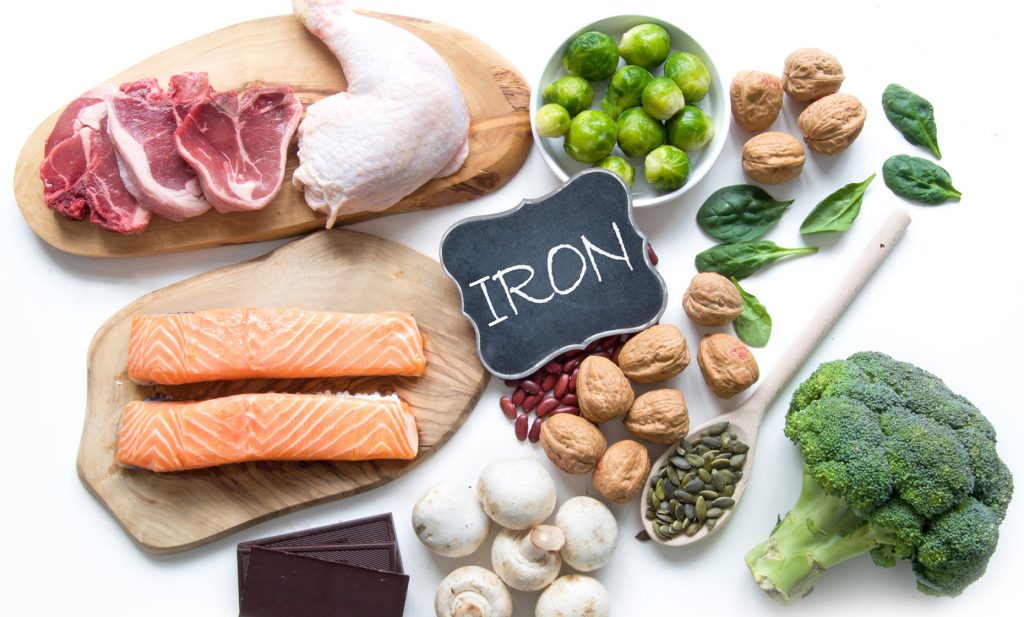How You Can Help Put an End to Maternal Anemia
As someone who works in healthcare, you probably know firsthand how common anemia is. After all, 2.8 million Americans receive a primary diagnosis of anemia every year, the National Center for Health Statistics reports.


How You Can Help Put an End to Maternal Anemia
May 11, 2021
.
As someone who works in healthcare, you probably know firsthand how common anemia is. After all, 2.8 million Americans receive a primary diagnosis of anemia every year, the National Center for Health Statistics reports.1
The numbers are even more striking when isolated to pregnant women: The condition occurs in approximately 22 of every 1,000 expecting moms when defined as a hemoglobin concentration of less than 10 g/dL.2 And the farther along a woman is in her pregnancy, the greater the chances that she’ll become anemic: Research shows that as many as one-third of women have anemia in the third trimester.3
Although the condition can be fairly mild at the outset, anemia can worsen with time. And for pregnant women, it can be particularly problematic, with potentially serious complications.4
Let’s take a look at anemia in pregnancy: why it’s important, how to detect and treat it, and how to make sure your pregnant patients are receiving the top-notch care they deserve.

Causes of Anemia in Pregnancy
Several types of anemia can occur in pregnancy, Stanford Children’s Health reports:5
- Anemia of pregnancy, which occurs when the body’s blood volume increases in response to pregnancy. This in turn creates an increased need for the iron and vitamins the body needs to make hemoglobin. Anemia of pregnancy is considered normal as long as it remains mild, the American Society of Hematology (ASH) reports.6
- Folate deficiency anemia, which is caused by a decrease in red blood cells due to a lack of folate.7
- Vitamin B12 deficiency anemia, which involves an insufficient intake of B12, a nutrient that helps the body manufacture red blood cells. Since animal products such as eggs, meat, milk and poultry are a primary source of vitamin B12, pregnant women who eat a vegan diet are most apt to have a vitamin B12 deficiency.5
- Iron-deficiency anemia, which occurs in part because the developing fetus uses maternal stores of red blood cells for its growth and development, particularly during the last trimester. This is the most common type of anemia, accounting for about 95 percent of anemia cases during pregnancy,3 and the one we’ll focus on here.
The Dangers of Maternal Anemia
In addition to causing fairly mild symptoms, such as fatigue and dizziness, anemia during pregnancy can cause more serious complications for mother and child, especially if the condition is severe. Those include:2-4, 8-10
.
For mother:
• A need for transfusions after delivery
• Cardiac failure or death
• Hemorrhage
• Placental abruption
.
• A need for transfusions after delivery
• Cardiac failure or death
• Hemorrhage
• Placental abruption
.
For baby:
• Behavior abnormalities
• Being born at a low birth weight
• Death in utero or after delivery
.
• Decreased iron stores
• Delayed growth and development
• Poor scores on mental and psychomotor tests
.
These potential complications make it all the more imperative that healthcare providers remain vigilant about the condition, particularly among their pregnant patients.

Healthy Nutrition for Pregnant Women
Women need at least 27 mg of iron daily when pregnant, significantly more than the 18 mg needed when not expecting.11 Experts agree that the best way to get sufficient amounts of iron, thereby helping to prevent anemia, is for women to focus on good nutrition.6 This includes:
.
- Eating plenty of iron-rich foods, such as the following:12
.
• Fortified breakfast cereals
• Cooked oysters
• White beans
• Lentils
• Spinach
• Tofu
.
• Kidney beans
• Sardines
• Chickpeas
• Lean cuts of beef
• Cashews
• Chicken
.
- Knowing the difference between heme and nonheme iron.
Heme iron (the type found in fish, meat and poultry) is more easily absorbed than nonheme iron (the type found in plant sources and supplements). To enhance absorption of nonheme iron, a food or drink that’s high in vitamin C, such as orange juice, strawberries or tomato juice, should be included with the meal, the Mayo Clinic advises.9 The National Center for Biotechnology Information (NCBI) at the National Institutes of Health reports that drinking orange juice with a meal can roughly double the amount of nonheme iron that’s absorbed when compared with water.13 - Watching foods that can interfere with iron absorption.
Eating a meal high in whole-grain cereals and legumes can cut iron absorption; so can calcium, coffee and tea. To offset this, women can add small amounts of meat or vitamin C-rich foods to the meal, as mentioned above.4,13

A Refresher on Screening Guidelines
Since anemia is so common among pregnant women, caregivers should take steps to check for it beginning early on in a woman’s gestation. Following are expert guidelines relative to screening.
- The NCBI recommends that all pregnant women have their hemoglobin or hematocrit checked at their first prenatal visit to determine whether they have preexisting anemia.13 While a standard CBC can of course be used to measure these levels, other tests are available that give accurate readings on the spot. The HemoCue® Hb 801 System, for example, includes point-of-care tests that gather blood samples via a fingerstick and microcuvette. The microcuvette is then inserted into the analyzer, which displays results in less than one second, allowing treatment to begin immediately if a patient is found to be anemic.
Anemia is defined as:
• A hemoglobin level below 11.0 g/dL during the first or third trimester
• A hemoglobin below 10.5 g/dL during the second trimester13
Other researchers state that healthcare providers may opt to treat pregnant women prophylactically if their hemoglobin is less than 11.5 g/dL at the onset of pregnancy, since the normal hemodilution associated with pregnancy typically reduces hemoglobin further.3 - If a serum ferritin concentration of less than 12 mcg/L is found in conjunction with anemia, iron-deficiency anemia can be presumed to exist, the NCBI says, and iron therapy may be undertaken.13
- Even if a pregnant woman doesn’t have anemia, the NCBI states that she may begin iron therapy at approximately 12 weeks of gestation to help prevent iron deficiency, and to provide a buffer for the blood loss that will occur during delivery. A healthy, well-balanced diet should also be eaten.13
- Since approximately 20 percent of pregnant women are unable to absorb enough supplemental oral iron, experts report that some may need parenteral therapy.3
- If a woman does become anemic, it may be advisable to test her four to six weeks after delivery, American Society of Hematology reports.6
.
While anemia might seem innocuous enough when it comes to the general population, the condition can cause complications for pregnant women, some of them serious. In fact, experts worldwide say the condition is such a risk to maternal health that they’ve called for a drastic reduction in its prevalence.14
We couldn’t agree more. It’s time to treat anemia with the seriousness it demands, and to put pregnant women at the forefront for screening and treatment. Let’s all join together to make anemia history!
Footnotes:
1 FastStats. 26 Jan. 2021, https://www.cdc.gov/nchs/fastats/anemia.htm.
2 Anemia in Pregnancy, https://www.acog.org/en/clinical/clinical-guidance/practice-bulletin/articles/2008/07/anemia-in-pregnancy. Accessed Apr. 2021.
3 “Anemia in Pregnancy - Gynecology and Obstetrics.” Merck Manuals Professional Edition, https://www.merckmanuals.com/professional/gynecology-and-obstetrics/pregnancy-complicated-by-disease/anemia-in-pregnancy. Accessed Apr. 2021.
4 “Anemia - Symptoms and Causes.” Mayo Clinic, https://www.mayoclinic.org/diseases-conditions/anemia/symptoms-causes/syc-20351360. Accessed Apr. 2021.
5 “Anemia in Pregnancy.” Stanford Children’s Health, https://www.stanfordchildrens.org/en/topic/default?id=anemia-in-pregnancy-90-P02428. Accessed Apr. 2021.
6 “Anemia and Pregnancy.” American Society of Hematology, https://www.hematology.org:443/education/patients/anemia/pregnancy. Accessed Apr. 2021.
7 Folate-Deficiency Anemia: MedlinePlus Medical Encyclopedia, https://medlineplus.gov/ency/article/000551.htm. Accessed Apr. 2021.
8 Daru, Jahnavi, et al. “Risk of Maternal Mortality in Women with Severe Anaemia During Pregnancy and Post Partum: A Multilevel Analysis.” The Lancet Global Health, vol. 6, no. 5, May 2018, pp. e548–54. www.thelancet.com, doi:10.1016/S2214-109X(18)30078-0.
9 “Prevent Iron Deficiency Anemia During Pregnancy.” Mayo Clinic, https://www.mayoclinic.org/healthy-lifestyle/pregnancy-week-by-week/in-depth/anemia-during-pregnancy/art-20114455. Accessed Apr. 2021.
10 “Women with Anemia Twice as Likely to Need Transfusion After Cesarean Delivery.” American Society of Anesthesiologists, https://www.asahq.org/about-asa/newsroom/news-releases/2019/10/8-anemia-after-cesarean. Accessed Apr. 2021.
11 Nutrition During Pregnancy, https://www.acog.org/en/womens-health/faqs/nutrition-during-pregnancy. Accessed Apr. 2021.
12 Office of Dietary Supplements – Iron, https://ods.od.nih.gov/factsheets/Iron-HealthProfessional/. Accessed Apr. 2021.
13 Institute of Medicine (US) Committee on Nutritional Status During Pregnancy and Lactation. “Iron Nutrition During Pregnancy.” National Academies Press (US), 1990, https://www.ncbi.nlm.nih.gov/books/NBK235217/.
14 Young, Melissa F. “Maternal Anaemia and Risk of Mortality: A Call for Action.” The Lancet Global Health, vol. 6, no. 5, May 2018, pp. e479–80. www.thelancet.com, doi:10.1016/S2214-109X(18)30185-2.
Related Articles
Introducing the HemoCue Customer Portal